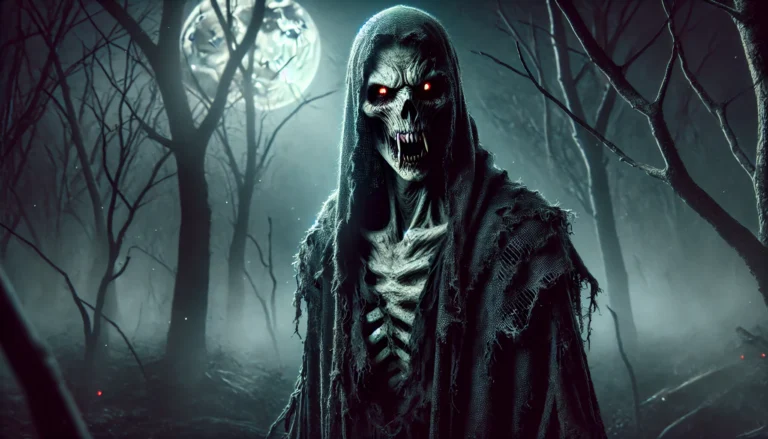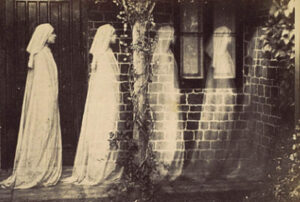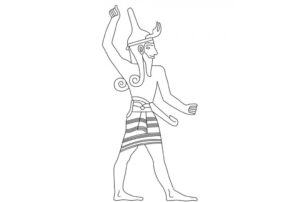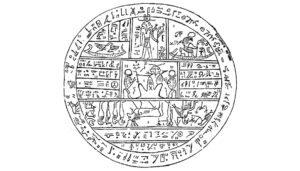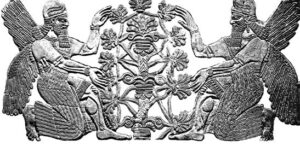Table of Contents
Strigoi are one of the most fascinating and fearsome creatures in Eastern European folklore, particularly within Romanian mythology. Often considered the predecessors of the modern vampire myth, Strigoi have captivated the imagination of many with their eerie presence and malevolent tendencies. These undead beings are said to rise from their graves to torment the living, and their stories are deeply woven into the cultural fabric of the regions where they are believed to roam.
Origins and Etymology
The term “Strigoi” derives from the Romanian words “striga” (to scream) and “strigă” (witch), reflecting their connection to malevolent supernatural entities. Notably, the concept of Strigoi has roots in ancient Dacian mythology, where the restless spirits of the dead were feared and respected. Over time, the myth evolved, incorporating elements from Slavic, Hungarian, and Greek folklore. Consequently, these cultural influences combined to shape the modern understanding of Strigoi as vampiric entities.
Family and Classification
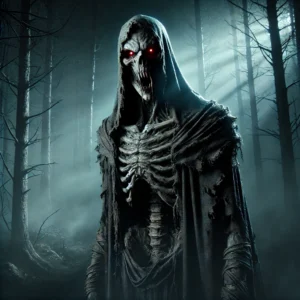
In Romanian folklore, Strigoi are classified into two main types: Strigoi Vii (living Strigoi) and Strigoi Morți (dead Strigoi). Strigoi Vii are humans with the potential to become Strigoi after death. They are often witches or people born with certain anomalies, such as being the seventh child of the same sex in a family or being born with a caul (a membrane that can cover a newborn’s head and face). Strigoi Morți, on the other hand, are the reanimated corpses of these individuals, who rise from their graves to feed on the blood of the living.
Appearance
The appearance of a Strigoi varies depending on the type. Strigoi Vii look like ordinary humans, though they may exhibit peculiar traits such as red hair, blue eyes, or a propensity for nocturnal activity. Strigoi Morți are more grotesque, often described as gaunt and pale with sunken eyes and long, sharp fingernails. Their teeth, particularly the canines, are elongated, resembling the fangs of modern vampire depictions. When they rise from the grave, their clothing is often tattered and covered in earth, adding to their terrifying visage.
Abilities
Strigoi possess a range of supernatural abilities that make them formidable and fearsome. These abilities include:
- Shape-shifting: Strigoi can transform into various animals, such as wolves, bats, and owls. This ability allows them to move stealthily and escape detection.
- Invisibility: They can become invisible, making it difficult for their victims to see them coming.
- Hypnosis: Strigoi can mesmerize their victims, placing them in a trance-like state to make feeding easier.
- Enhanced Strength and Speed. These creatures possess physical prowess far beyond that of ordinary humans, enabling them to overpower their victims effortlessly.
- Flight: Some legends suggest that Strigoi can fly, either in their human form or after transforming into a bat or bird.
Weaknesses
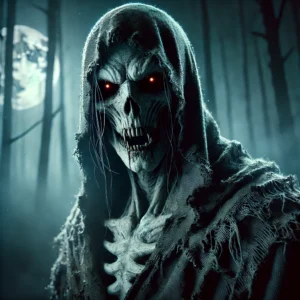
Despite their formidable powers, Strigoi have several weaknesses that can be exploited to protect oneself from their predations:
Behavior with Humans
Strigoi are malevolent entities that primarily prey on humans. They rise from their graves at night to feed on the blood of the living, a process that not only sustains them but also spreads disease and misfortune. Victims of Strigoi attacks often suffer from anemia, exhaustion, and mysterious illnesses. In addition to their bloodlust, Strigoi are known to harass their former families and communities, causing mischief and fear. They can also manipulate dreams, instilling terror in their victims even when they sleep.
Symbols and Representation
Various symbols are associated with Strigoi, reflecting their dark and ominous nature:
- Bats and Wolves: As shape-shifters, these animals are frequently linked to Strigoi in folklore and art.
- Blood: Representing their primary sustenance, blood is a potent symbol in Strigoi mythology.
- Graveyards: The resting places of Strigoi, graveyards are often depicted in stories and imagery surrounding these creatures.
- Darkness and Night: Strigoi are creatures of the night, and darkness symbolizes their preferred hunting grounds and times.
Myths and Stories
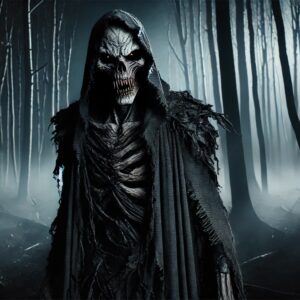
Many tales of Strigoi are passed down through generations, often involving real historical figures believed to be Strigoi. One famous account involves the story of Petre Toma, a Romanian peasant who was believed to have become a Strigoi after his death. According to legend, Toma’s family and neighbors began to experience strange illnesses and misfortunes shortly after his burial. Suspecting he had become a Strigoi, villagers exhumed his body and found it unnaturally preserved, with blood at his mouth. They performed a ritual that involved driving a stake through his heart and burning his body, after which the disturbances ceased.
Another well-known story is that of Elizabeth Báthory, the infamous Hungarian countess who was rumored to bathe in the blood of virgins to retain her youth. While she is more commonly associated with vampire lore, her actions and the fear she inspired are reminiscent of Strigoi legends. Her tale has contributed to the blending of Strigoi myths with broader European vampire traditions.
Related Creatures
Strigoi share similarities with other mythological creatures, both within Eastern European folklore and beyond:
- Vampires: The most direct comparison, vampires in Western mythology share many traits with Strigoi, including blood-drinking and aversion to sunlight.
- Moroi: Another Romanian undead creature, Moroi are often confused with Strigoi. While Strigoi are reanimated corpses, Moroi are typically living witches or sorcerers with vampiric tendencies.
- Wendigo. In Native American folklore, Wendigos are malevolent spirits or monsters associated with cannibalism and insatiable hunger, similar to the Strigoi’s bloodlust.
- Rakshasa: In Hindu mythology, Rakshasas are malevolent beings with the ability to shape-shift and possess supernatural powers, akin to the Strigoi’s abilities.
Cultural Impact and Legacy
The legend of the Strigoi has had a profound impact on Romanian culture and beyond. These creatures are central to many folktales and have influenced the portrayal of vampires in literature and popular culture. The fear of the Strigoi has led to various practices aimed at preventing the dead from rising, such as placing garlic in coffins, burying bodies face down, or performing elaborate funerary rites.
In modern times, Strigoi have found their way into literature, movies, and television shows, thereby contributing to the global vampire mythos. For instance, works like Bram Stoker’s “Dracula” and Anne Rice’s “The Vampire Chronicles” draw on elements of Strigoi lore, blending it with other vampire legends to create rich, terrifying narratives.
FAQ
Where do Strigoi originate?
Strigoi originate from Romanian mythology, with roots in ancient Dacian beliefs and influences from Slavic, Hungarian, and Greek folklore.
How do Strigoi look?
Strigoi Morți (dead Strigoi) are often described as gaunt, pale, with sunken eyes and long, sharp fingernails. Strigoi Vii (living Strigoi) look like ordinary humans but may have unusual traits like red hair or nocturnal habits.
What abilities do Strigoi have?
Strigoi can shape-shift into animals, become invisible, hypnotize victims, and possess enhanced strength and speed. Some legends also say they can fly.
What are Strigoi's weaknesses?
Strigoi are repelled by garlic, holy symbols, and sunlight. They can be destroyed by fire or a wooden stake through the heart.
How do Strigoi interact with humans?
Strigoi rise at night to drink human blood, causing illness and fear. They also harass their former families and communities.
What symbols are associated with Strigoi?
Bats, wolves, blood, graveyards, and darkness are commonly linked to Strigoi in folklore and art.
Are there famous Strigoi stories?
Yes, tales like the story of Petre Toma, a Romanian peasant who became a Strigoi after death, are well-known. Strigoi myths have also influenced vampire literature like Bram Stoker's "Dracula."
How have Strigoi influenced popular culture?
Strigoi have inspired various books, movies, and TV shows, contributing significantly to the global vampire mythos.
Are there other creatures similar to Strigoi?
Yes, creatures like vampires, Moroi (another Romanian undead), Wendigos, and Rakshasas share similarities with Strigoi in their supernatural abilities and behaviors.
